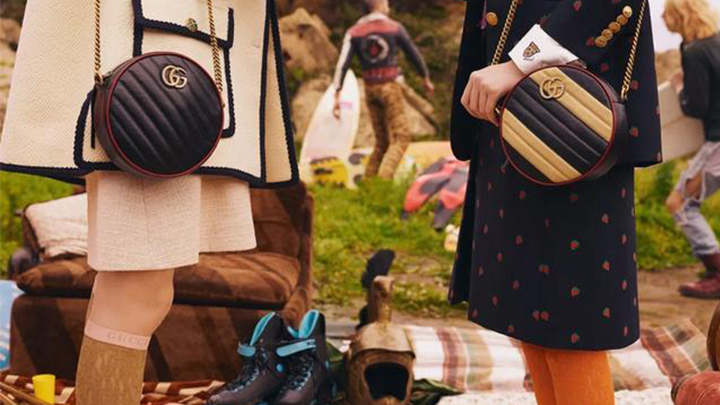Common Materials Used in Branded Bags
When it comes to branded bags, the materials used play a crucial role in determining their quality, durability, and aesthetic appeal. High-end brands often invest in premium materials to create products that not only look luxurious but also last for years. Here’s a closer look at some of the common materials used in branded bags:
1. Leather
Leather is one of the most popular materials for branded bags due to its durability, elegance, and versatility.
Types of Leather:
- Full-Grain Leather: This is the highest quality leather, known for its natural look and ability to develop a patina over time.
- Top-Grain Leather: Slightly lower in quality than full-grain, it’s still highly durable and has a refined, smooth finish.
- Saffiano Leather: Known for its distinctive crosshatch pattern, it is treated to be scratch-resistant and water-repellent.
- Suede: A softer, more flexible type of leather with a napped finish, often used for its luxurious feel.
Applications: Leather is commonly used for a wide range of bag styles, including handbags, wallets, briefcases, and travel bags.
2. Canvas
Canvas is a heavy-duty, woven fabric that’s both durable and versatile.
Features:
- Durability: Canvas is known for its strength and resistance to wear and tear, making it ideal for everyday use.
- Water-Resistant Variants: Some canvas bags are treated to be water-resistant, enhancing their practicality.
- Customization: It’s easy to dye and print on canvas, allowing for a variety of colors and patterns.
Applications: Canvas is widely used for tote bags, backpacks, and casual crossbody bags. It’s especially popular in styles that blend functionality with fashion.
3. Nylon
Nylon is a synthetic polymer that’s lightweight and durable, making it a favorite for practical and sporty designs.
Features:
- Lightweight: Nylon bags are easy to carry, even when filled.
- Water-Resistant: Many nylon fabrics are water-resistant, protecting the contents of the bag from the elements.
- Easy to Clean: Nylon is simple to maintain, often requiring just a wipe-down to clean.
Applications: Nylon is commonly used in backpacks, travel bags, and gym bags. It’s also seen in many contemporary and minimalist bag designs.
4. Jacquard
Jacquard fabric features intricate woven patterns, often used by luxury brands to create distinctive and elegant designs.
Features:
- Textured Patterns: Jacquard weaves allow for complex designs, giving the fabric a rich, textured appearance.
- Durability: It’s a robust material that can withstand daily use while maintaining its intricate patterns.
- Luxury Appeal: Often associated with high-end fashion, jacquard adds a touch of sophistication to any bag.
Applications: Jacquard is typically used for high-end handbags, evening bags, and clutches.
5. Denim
Denim, traditionally used in apparel, has found its way into the world of branded bags for its casual and rugged appeal.
Features:
- Durable: Known for its toughness, denim can handle heavy use.
- Versatile: Denim can be styled in various ways, from classic blue to colored and patterned options.
- Casual Style: It’s perfect for creating a relaxed, everyday look.
Applications: Denim is popular in casual totes, backpacks, and slouchy hobo bags.
6. Exotic Skins
Luxury brands often use exotic animal skins for their high-end products, offering a unique texture and appearance.
Types of Exotic Skins:
- Crocodile and Alligator: These skins are prized for their distinctive patterns and high durability.
- Python: Python skin is known for its striking scales and supple feel.
- Ostrich: Recognizable by its unique quill pattern, ostrich leather is soft yet durable.
Applications: Exotic skins are used in premium handbags, clutches, and accessories, often commanding high prices due to their rarity and craftsmanship.
Conclusion
The materials used in branded bags are carefully selected to enhance their aesthetic, durability, and functionality. Whether it’s the timeless elegance of leather, the practical versatility of nylon, or the luxurious appeal of exotic skins, each material contributes to the unique identity and value of the bag. As trends evolve and technology advances, the exploration of new materials and combinations continues to expand the possibilities in bag design.
By understanding the characteristics of these materials, consumers can make informed choices about their purchases, ensuring they select bags that meet their style preferences and practical needs.




